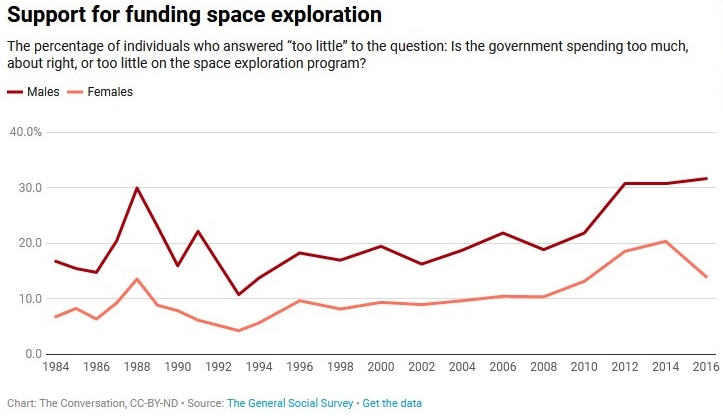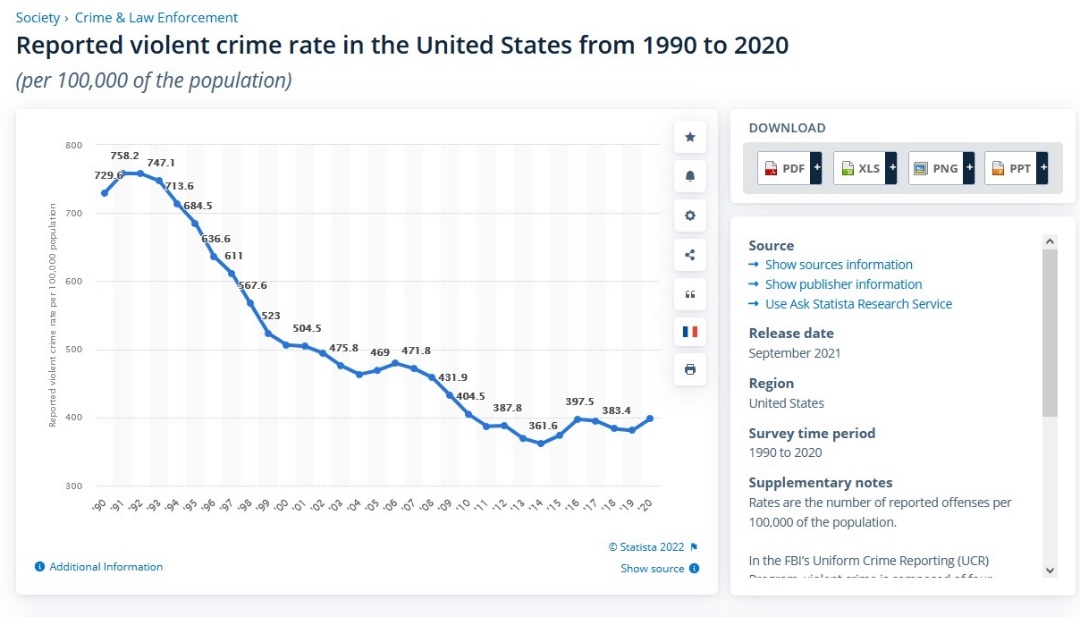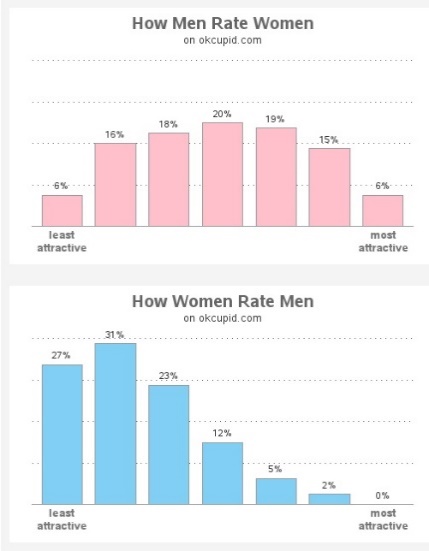Adapted from a chapter in my recent book, The Great Feminization…
From conception through adolescence, male and female humans—mammals in general—are driven along distinct neural and anatomical developmental pathways by androgen and estrogen hormones, men having more of the former, women having more of the latter. The divergences in those developmental pathways lead to the innate differences in attitudes and behaviors between men and women.
One of the most striking of these behavioral/attitude differences has to do with risk: Women are, on average compared to men, markedly less willing to undertake risks—more “risk-averse”—and this gender difference has been shown (here and here, for example) to be broadly testosterone (T)-linked. In general, research in the past few decades suggests that either the bloodstream T level, or a marker (based on relative finger lengths) of prenatal T exposure, or both, predicts a person’s propensity for risky behaviors, as well as for competition and aggression.
Social psychology experiments on risk aversion typically examine risk behaviors, such as gambling choices, that can be studied relatively tidily in a laboratory setting. At the same time, in the modern West, low risk-aversion is often framed as a negative, maladaptive trait that tends to lead people astray. In fact, in the real world, the ability to cope with fear and take big risks is probably an essential step in the process of civilization. As Camille Paglia famously quipped, “If civilization had been left in female hands, we’d still be living in grass huts.”
Indeed, a greater willingness to take risks, even in comparison to other male-run civilizations, is plausibly one of the reasons the West got so far out in front of the rest: exploring and conquering most of the non-European world, developing the most technologically and culturally advanced societies ever known, exploring outer space, etc. But now that the West’s culture and policy have been heavily feminized, the lesser female enthusiasm for risky adventures like space exploration—a difference that seems even more pronounced anecdotally than it is in surveys—helps explain why spending on such endeavors has become just a tiny fraction of spending on welfare and other matters dear to women’s hearts.
 [link]
[link]
That testosterone reduces fear, enhances the willingness to compete, and enhances the desire to dominate probably is a major reason men, on average compared to women, are more competitive, more willing to engage in violence, less subject to anxiety and fear, and less emotionally sensitive in general. Again, this is entirely what one would expect from men’s traditional roles not only as explorers but also as hunters and warriors. And, of course, we know that the vast majority of violent criminals are male. Thus, “willingness to fight” and related traits are obviously gender-determined to a great extent.
Should we care if the West’s feminization makes its people and their leaders less inclined towards fighting as well as exploration? Yes, we should care, especially if not all countries have been feminized. In the latter context, a country’s feminine aversion to fighting could result in its becoming enslaved, or even extinguished in genocide, by a less-feminized rival. But even a more subtle weakness could make a country highly susceptible to a bully’s manipulative threats.
For example, many already view the current New Zealand prime minister, Jacinda Ardern, as a personification of that weakness.

In general, human civilization seems to requires a willingness—at least in a critical mass of the population—to undertake fearful hardships, stresses, even violence and death, for good ends. Without men and their fear-lowering testosterone, who would supply that crucial willingness?
Testosterone and a feminized culture
Speaking of testosterone, if you haven’t been living in a cave for the past two decades, you know that T levels in men have been declining—in other words, men at a given age today tend to have lower T levels than men of the same age a few decades ago. Studies [link, link, link, link] have found this alarming trend in multiple developed countries including the US. Some of these studies have specifically controlled for potentially confounding factors such as increases in obesity, which lowers T, and still have found evidence of a decline.
No one really knows what is causing this drop in T levels among men. Apart from rising obesity, which almost certainly accounts for some of the problem, suspected culprits include estrogen-mimicking compounds that leach out of common plastics, and the big decline in cigarette smoking among men (smoking inhibits estrogen synthesis, and a few studies have linked smoking to higher T).
One hypothesis that never gets mentioned—well, except by me—is that cultural feminization is itself a significant driver of declines in T. In other words, the recent feminine shift in cultural themes and norms, which effectively suppresses and stigmatizes many traditional aspects of traditional masculinity, and the related loss of male power in society, has had an essentially feminizing effect on the male brain, resulting among other things in lower T levels.
This hypothesis could be tested, to some degree, with simple experiments. For example, I would guess that exposure to images or videos of women shouting—a pretty common motif in modern media—could be enough, depending on the dose, to measurably lower T levels in ordinary males.

To some of you, it may seem totally implausible that sociocultural factors, working via cognition and emotion, could influence something as deeply biological as the secretion of a sex hormone. However, it is a well-established phenomenon—in fact, it’s quite clear that the androgen system in mammals was specifically designed by Evolution to be regulated by social and other external cues.
It is known, for example, that sexual activity raises T levels in men (and women). Also, sports players and even their fans show increases in T levels after winning games, whereas losers show decreases. In general, it seems that T levels in men tend to rise before fights and other challenges, and either stay high or keep rising after wins, and drop after losses—one of Nature’s “winner take all” effects. (There is even evidence that becoming a father—which requires a less aggressive, more nurturing character—downregulates T production.) In other words, T levels definitely do rise or fall based on external sociocultural cues, with negative experiences being more likely to drive T levels lower. And thus, in a feminized society that hands men Ls every day, we really should expect them to show significant drops in T.
T and Civilization
In principle, the consequences of lower T levels aren’t all bad. For example, there appears to have been a striking drop in the rate of violent crime in the US since the 1980s and early 90s.

Of course, there are many other factors, including declining lead exposures, the passing of the 80s/90s crack-cocaine epidemic, and changes in urban policing policies, that could help explain this trend. But the hypothesis that falling T levels, over the same period, have contributed, is at least plausible. Wouldn’t that be a good thing?
Maybe in that narrow sense, it would. But, again, there would be tradeoffs. Some would involve men’s health: Low-T, for example, is known to promote depression, osteoporosis, obesity, erectile dysfunction and heart disease, among other adverse health consequences. Other tradeoffs might affect society even more profoundly. In particular, low-T would be expected to reduce men’s sperm counts—which, by the way, is a trend that researchers have specifically detected. Lower T and lower sperm counts would be expected, in turn, to make men less likely to marry and/or have children. One well-known study did find that lower-T men in their mid-20s were less likely to be married several years later—and of course many studies have noted the wider trends of falling marriage and cohabitation rates, and associated birth rates, in recent decades.

[link]
Endemic low-T in a society, or a wider civilization as in the case of the West, might thus be considered a clear warning sign that the bottom is dropping out. One would expect this warning sign to emerge in a society that has been subject to a major defeat in war. In the West, in a historically unprecedented turn of events, it may be happening despite Western war victories and geopolitical supremacy. In other words, Western social liberalism, with its handover of most cultural power to women, may have delivered to its men, and to Western civilization, the equivalent of a crippling defeat.
* * *
